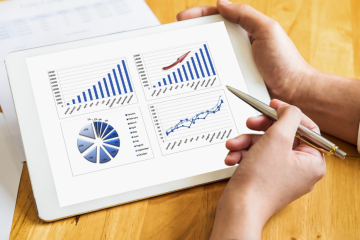In data science, garbage in, garbage out is a fundamental truth. No matter how advanced your model is, if your sample is biased or unrepresentative, your results will be misleading. That’s why correct sampling is crucial – it ensures that the insights you derive from your data are valid and reliable.
Why is Correct Sampling Crucial?
- Ensures Representativeness – The sample should reflect the characteristics of the full population.
- Reduces Bias – A poorly chosen sample can lead to misleading conclusions.
- Saves Time & Resources – Analyzing an entire population is often impractical. Sampling allows for efficiency.
- Improves Generalization – A well-drawn sample ensures that your findings apply beyond just the data at hand.
Example: Imagine conducting a survey about smartphone usage, but only sampling teenagers. The results wouldn’t accurately reflect the entire population!
Types of Sampling & Techniques
There are two main types of sampling:
1. Probability Sampling (Random Selection)
Each member of the population has a known, non-zero chance of being selected. This method minimizes bias.
Common Techniques:
- Simple Random Sampling
- Every individual has an equal chance of selection.
- Unbiased, but may not capture key subgroups.
- Stratified Sampling
- The population is divided into subgroups (strata), and random samples are taken from each.
- Ensures representation of all groups (e.g., age, gender).
- Cluster Sampling
- The population is divided into clusters (e.g., cities, schools), and some clusters are randomly selected.
- Cost-effective, but may introduce bias if clusters are not representative.
- Systematic Sampling
- Selects every k-th individual from a list.
- Easy to implement but can introduce bias if there’s a pattern in the data.
2. Non-Probability Sampling (Non-Random Selection)
Selection is based on convenience or judgment rather than randomness. This method is faster but can introduce bias.
Common Techniques:
- Convenience Sampling
- Uses easily accessible data (e.g., surveying friends or colleagues).
- Highly prone to bias, not recommended for serious studies.
- Snowball Sampling
- Participants recruit others (useful for hard-to-reach populations).
- Can lead to non-representative samples.
- Judgmental Sampling
- The researcher selects individuals based on their judgment.
- Risky unless done by an expert with deep knowledge of the population.
How to Determine Sample Size?
Choosing the right sample size balances accuracy and practicality.
Too Small? Results may not generalize to the population.
Too Large? Wastes resources without much added benefit.
Formula for Sample Size (Simplified for Large Populations):
n=Z2⋅p⋅(1−p)E2
Where:
- n = required sample size
- Z = z-score (based on confidence level, e.g., 1.96 for 95%)
- p = estimated proportion of the population (default 0.5 if unknown)
- E = margin of error
Tip: Many online calculators can help determine the required sample size!
Balanced vs. Imbalanced Data
Balanced Data
- When classes in the dataset are evenly distributed.
- Common in general classification problems (e.g., spam vs. non-spam emails).
- Models trained on balanced data learn fairly.
Imbalanced Data
- When one class is much more frequent than others.
- Common in fraud detection, rare disease prediction (e.g., 99% healthy vs. 1% sick).
- Models may become biased toward the majority class.
Solutions for Imbalanced Data:
Oversampling the minority class (e.g., SMOTE – Synthetic Minority Over-sampling Technique)
Undersampling the majority class
Adjusting class weights in machine learning models
Example: In fraud detection, only 1% of transactions might be fraudulent. A naive model that predicts “not fraud” for every transaction would still be 99% accurate but completely useless.
Real-World Applications of Sampling
- Marketing Research – Conducting surveys to understand customer preferences.
- Healthcare Studies – Testing new drugs using clinical trials.
- Machine Learning – Selecting a subset of data for training models.
- Elections & Polling – Predicting election outcomes with a sample of voters.
Final Thoughts
Sampling is an art and a science – choosing the right method and sample size is crucial for drawing accurate, reliable conclusions. Whether you’re running A/B tests, training a machine learning model, or conducting a survey, a well-thought-out sampling strategy ensures that your insights truly reflect reality.


0 Comments